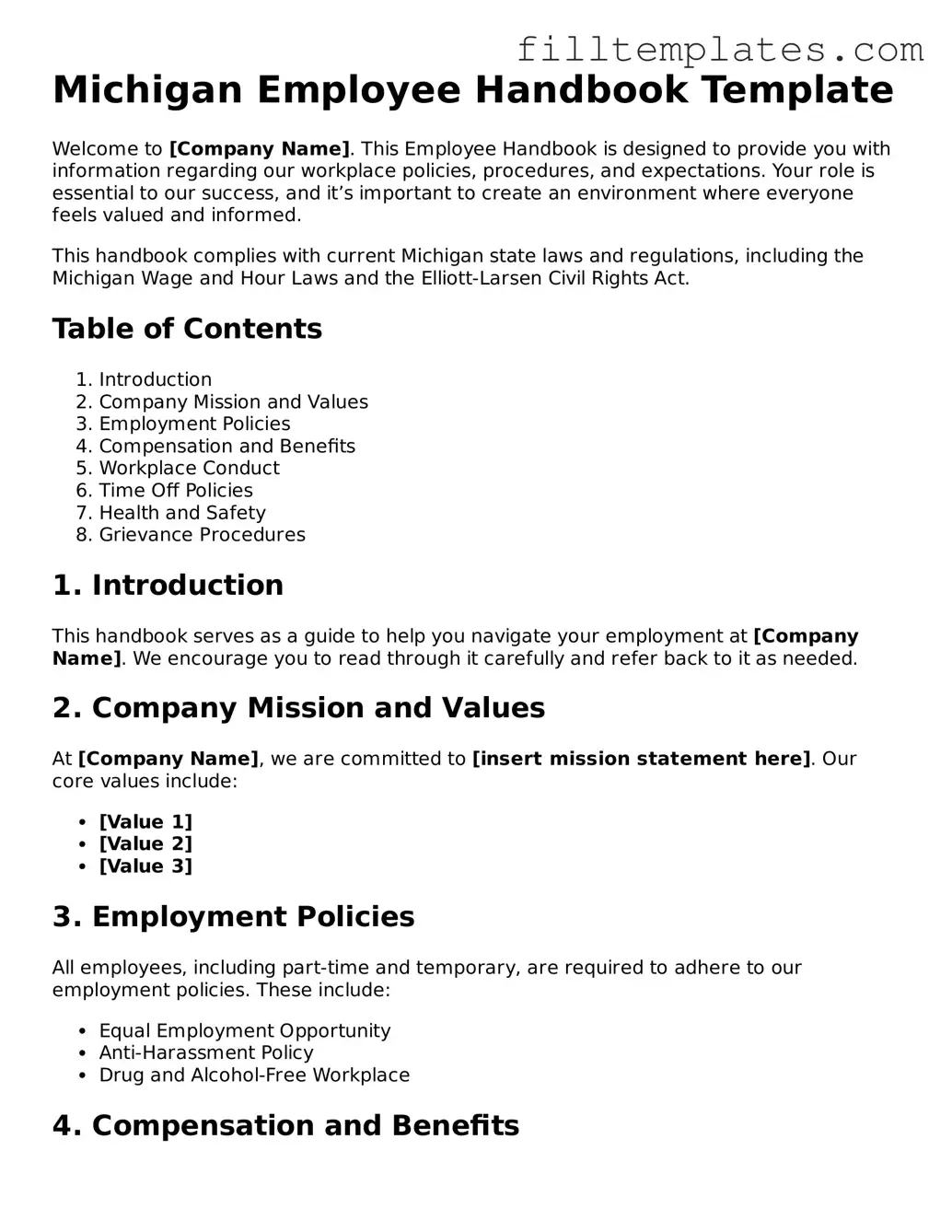Michigan Employee Handbook Template
Welcome to [Company Name]. This Employee Handbook is designed to provide you with information regarding our workplace policies, procedures, and expectations. Your role is essential to our success, and it’s important to create an environment where everyone feels valued and informed.
This handbook complies with current Michigan state laws and regulations, including the Michigan Wage and Hour Laws and the Elliott-Larsen Civil Rights Act.
Table of Contents
- Introduction
- Company Mission and Values
- Employment Policies
- Compensation and Benefits
- Workplace Conduct
- Time Off Policies
- Health and Safety
- Grievance Procedures
1. Introduction
This handbook serves as a guide to help you navigate your employment at [Company Name]. We encourage you to read through it carefully and refer back to it as needed.
2. Company Mission and Values
At [Company Name], we are committed to [insert mission statement here]. Our core values include:
- [Value 1]
- [Value 2]
- [Value 3]
3. Employment Policies
All employees, including part-time and temporary, are required to adhere to our employment policies. These include:
- Equal Employment Opportunity
- Anti-Harassment Policy
- Drug and Alcohol-Free Workplace
4. Compensation and Benefits
Employees at [Company Name] receive competitive pay and a comprehensive benefits package, which consists of:
- Health Insurance
- Retirement Plans
- Paid Time Off
5. Workplace Conduct
We strive to maintain a positive work environment. Expectations for conduct include treating everyone with respect, communicating openly, and adhering to company policies.
6. Time Off Policies
Employees are eligible for various types of leave, including:
- Sick Leave
- Vacation Leave
- Family and Medical Leave
7. Health and Safety
Ensuring a safe workplace is a priority. All employees must adhere to safety guidelines and report any hazards to management immediately.
8. Grievance Procedures
If you have concerns or grievances, we recommend addressing them directly with your supervisor. If the issue remains unresolved, feel free to follow our formal grievance process.
Thank you for being a part of [Company Name]. Together, let’s foster a positive and productive workplace!
